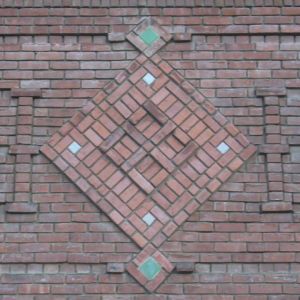| Willipedia is now back online as of 5/5/2019 |
| It has been several years since Willipedia closed. Please help get it updated! |
| Go to the Willipedia 2.0 Project to learn more. |
Difference between revisions of "Weston Language Center"
m (put Emily's current stuff first and automated numbers) |
|||
| Line 1: | Line 1: | ||
[[Category:History]] | [[Category:History]] | ||
| + | [[Category:Buildings]] | ||
Weston Language Center was built in 1905-1906. It formerly housed the [[Phi Delta Theta]] fraternity. Now it houses many language classes, and has a nice foreign language library. | Weston Language Center was built in 1905-1906. It formerly housed the [[Phi Delta Theta]] fraternity. Now it houses many language classes, and has a nice foreign language library. | ||
Revision as of 23:58, May 8, 2008
Weston Language Center was built in 1905-1906. It formerly housed the Phi Delta Theta fraternity. Now it houses many language classes, and has a nice foreign language library.
What's There Now
The most likely reason you'll find yourself in Weston is for class, but here are a few more things to do:
- Go to the language lab downstairs - it has a computer lab with PCs and Macs, a printer, a collection of foreign films (which, unfortunately, must be watched in the lab at small desk TVs or in the viewing room), and textbooks and tapes for language classes.
- Attend foreign films, International Studies colloquia, and Lissack forums - check the weekly schedule posted in the lobby for events and times.
- Go to a Russian theater performance at the end of the semester - even if you don't speak Russian, action-packed and often violent one acts are fun!
Common myths about Weston
The most common myth is as follows, here taken from an EphBlog comment:
- The rumors about Weston when I went was about why it was used for classrooms and not housing. The story was that, when fraternities were abolished, the fraternity that owned it gave it to the college to be used for classrooms because they did not want blacks or Jews living in it.
Mark Hobel, Executive Editor of the Record, summarized the myth thus:
- I had heard rumors about Weston Hall. The fraternity that once owned the building, I had been told, was violently racist and anti-Semitic. In 1965, with the beloved Greek system’s demise imminent, the brothers had reluctantly agreed to turn the house over to the College. There was one stipulation, however: no non-Christian or non-white could ever be allowed to sleep there. The College circumvented this obligation by turning the building into its new center for, ironically enough, foreign languages. The contract still had to be honored, however, and no “non-Aryan” could ever spend the night in Weston Hall.
These myths are not true. Keep reading.
The swastika
On the west side of Weston is a design that looks suspiciously like a swastika. (In fact, it is "backwards" from the Nazi variety.) Many people notice this swastika, so in 2002 the Record did an article debunking various myths about Weston:
- After poring over the contents of the Weston Hall file, along with several other files and back issues of the Record, I think I can safely conclude that the swastika on the wall bears absolutely no relation to Hitler’s symbol of genocide. Additionally, the Williams Phi Delta Thetas were by no means the violent bigots I had believed them to be. In fact, they fought on the side of religious tolerance in an early 1950s battle against their own national headquarters...
- The rumor that Phi Delta Theta was an anti-Semitic organization is also wrong, at least in reference to the fraternity’s final two decades. In the fall of 1952, the fraternity chose to pledge a Jewish freshman, in violation of the constitution of the national brotherhood of Phi Delta Theta. According to Section 26 of that document, “only male, white persons of full Aryan blood [who are] not less than 16 years of age shall be eligible.” ...
- “We have seriously considered the moral implications of the clause (section 26), and feel strongly that the discriminatory clause is incompatible with the principles of friendship and ethics as espoused in the Bond of Phi Delta Theta,” wrote Peter F. Connolly ’53, president of the chapter, in a statement to the Record.
